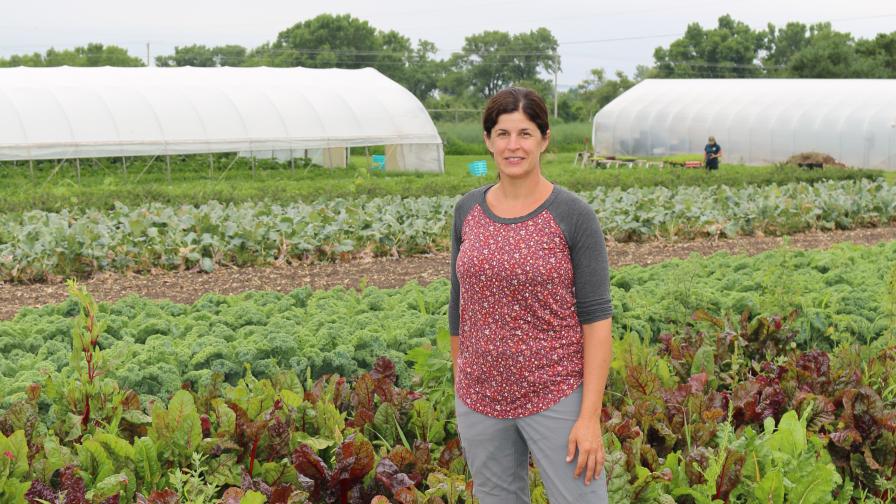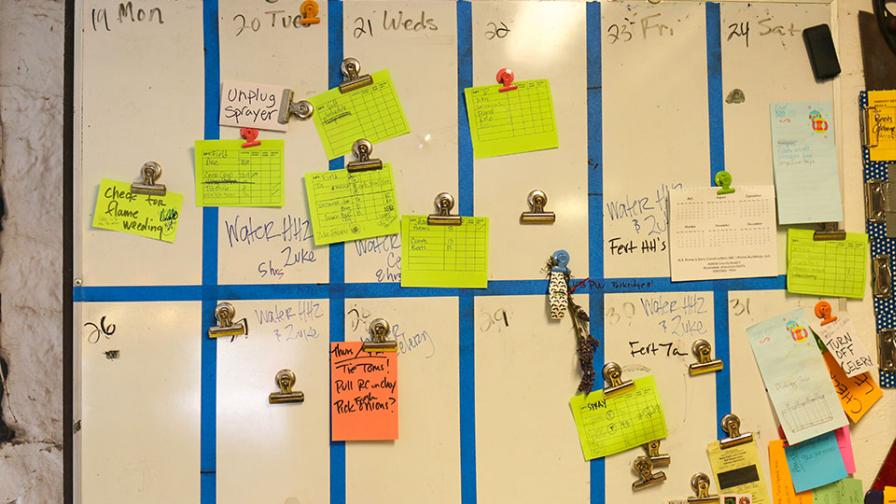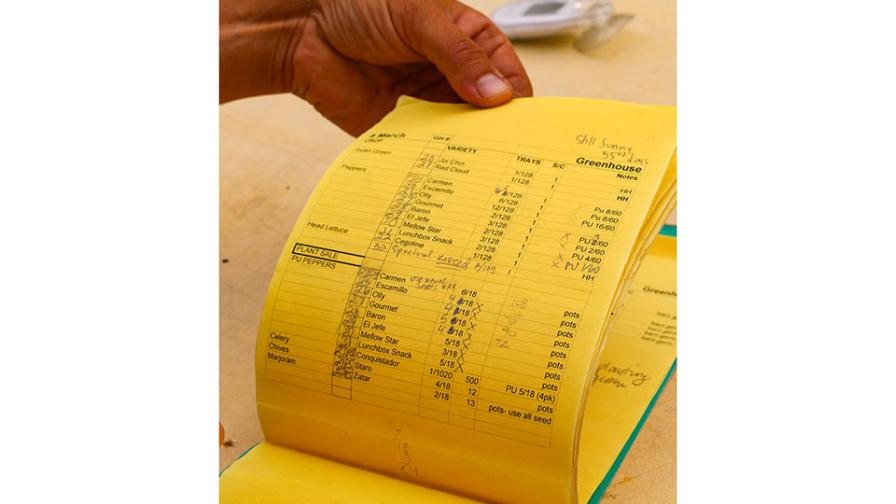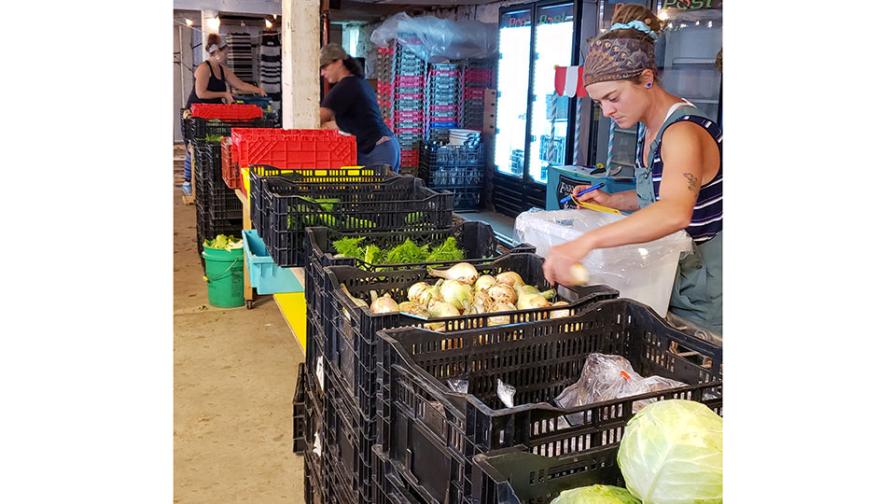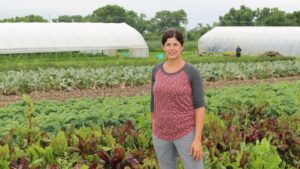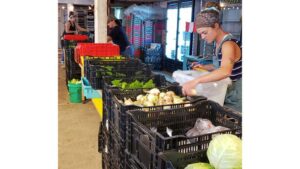How Big Business on a Small Farm Is Done
Most who operate a farm on less than 25 acres typically cannot afford to quit their day job, much less support a staff. But an organic farmer near Fond du Lac, WI, not only does that but is able to make capital investments in the farm and keep the operation in the black.
Robyn Calvey, owner of Park Ridge Organics, purchased her parents’ farm in 2013 at market value. Since then, she’s focused on finances and strategy to make her farm work for her and her staff.
Not only that, she decided to downshift the farm’s growth so team members could balance their personal lives with work. This year, the farm put fewer acres into production yet still managed to support a full-time staff. Here’s how she did it.
Where the Farm Gets Its Income
First a little background on Park Ridge Organics. Before the pandemic, it operated as a CSA, held regular stands at local farmers markets, and hosted an on-site store.
When the pandemic hit, Calvey decided to drop the farmers markets. The team ramped up the CSA, increasing membership to 450 subscribers.
“It was a good season, and we had a lot of staff. But looking at it from a
financial perspective, it wasn’t producing us any bigger of a margin,” she says.
That same year, her farm manager told her he would be pursing new work outside of the region.
“It was very hard for me. I like predictability, and I was comfortable managing the business,” she says. “But when I was forced to change, I pivoted and realized that I need to be okay with imagining what could be.”
Looking ahead to 2021, Calvey and a newly promoted co-farm manager assessed the situation. The pandemic proved the farm could thrive without the farmers markets. Calvey took pen to paper and evaluated how the farm would do downsizing the CSA to 375 subscribers, reducing production (down to 6 of the 16 acres available), and staffing the farm with only four full-time employees, including herself, and part-time seasonal workers.
The math worked out, and so Park Ridge Organics started taking both Saturdays and Sundays off. Calvey lives on-site and can take care of any unexpected issues that might arise over the weekend.
“I do feel like it was this golden tipping point that we got to,” Calvey says. “I feel like every farm has that point, and it’s really hard to accept it and acknowledge it.”
At a Glance: Park Ridge Organics
Founded: 2003
Owner: Robyn Calvey
Location: Fond du Lac, WI
Crops: A wide assortment of vegetables, both field and greenhouse
Interesting Fact: In 2021, all of Park Ridge Organics’ employees were female.
System Plans Key to Making It Work
After Calvey purchased the farm, she took advantage of finance classes offered by her local organic organization, MOSES (Midwest Organic & Sustainable Education Service). She also put in place pragmatic work schedules that were easy for everyone to follow.
In the barn where workers assemble the CSA boxes, she has a two-week schedule on a whiteboard. Anyone can glance at the board to see which tasks need to be done and when. They can then tackle the next one, adding their initials to show they handled it.
This system allows workers to assess what needs to be done, then assign themselves the tasks.
“Everyone can contribute,” she says.
Part of the reason it works so well is that the staff developed the task lists over the years. As they recognized ways to improve methods, they could share with others. Everyone is invested.
“You just have to have a sense as an owner of what it takes to manage people well, to put people in the right roles on your farm. Then efficiencies can really take off,” Calvey says.
Park Ridge’s staff work nine hours per day, five days a week. On Fridays, they can leave a bit early if the work is done. It usually adds up to somewhere between 15 minutes to an hour, and Calvey pays them as if they completed the hour.
For some areas of the farm, like the greenhouse, Calvey created a crop schedule, held together in low-tech booklets.
Growing Income without More Expense or Work
Now that Calvey has had the lighter workload in place for a year, she’s looking at ways to expand carefully without adding too much expense.
She will increase her CSA a bit but doesn’t see that as her main chance of increasing income.
“We are going to take more members next year, just bumping it up a little bit,” Calvey says. “This season, we had well beyond the $8,000 per week we needed, so without changing a single thing — we’re not going to change our production at all — we can tack on another 25 shares, and we won’t feel that.”
She sees a lot more potential in her farm store, so she plans to expand the size.
The size of a bedroom (20 feet by 12 feet), it boasts quality coolers and some shelving. Importantly, it is self-serve.
The checkout allows for both cash and credit. There’s a cash drawer available, trusting in the customers (and security cameras). The checkout kiosk is connected to the internet and is easy to use, backed up with clear instructions.
If customers have questions, they press the button (a Ring doorbell) and it connects to Calvey’s cell phone. No matter where she may be, she can talk with the customer and walk them through checking out.
Because of this, ramping it up to even double the size will have little impact on her labor costs.
“I mean, the overhead is so much lower than going to a farmers market. And I don’t need to have any extra staff. When you’re out to harvest 400 of something, to throw an extra 30 of them on your harvest list is nothing. And now you have enough to stock your store for that week.”
The store is in a small corner of Calvey’s large, historic barn, built in the 1880s and the hub of the operation. She could easily double the store’s size without impacting the team’s ability to get tasks done in the rest of the space.
Looking ahead, Calvey plans to keep evaluating where the farm can improve and move forward. She has a few big-ticket items planned for the next couple of years, including building a pavilion/workspace on the site where the farm’s first greenhouse stood, and painting the historic barn.
Calvey is constantly exploring new ideas for better cash flow and income and weighs each one carefully. Capital expenses like these will be an ongoing expense, as they are for any farm. But due to how she manages the finances, Calvey is positioned to keep her small farm going until the next generation.
How Park Ridge Organics’ CSA Works
The small farm has a high-tech CSA system. Customers can customize which vegetables they want included in their boxes. When they first sign up, they share which crops they want and which ones they do not want. As the weeks pass, they can log in and double a vegetable or eliminate one. It keeps customers happy.





